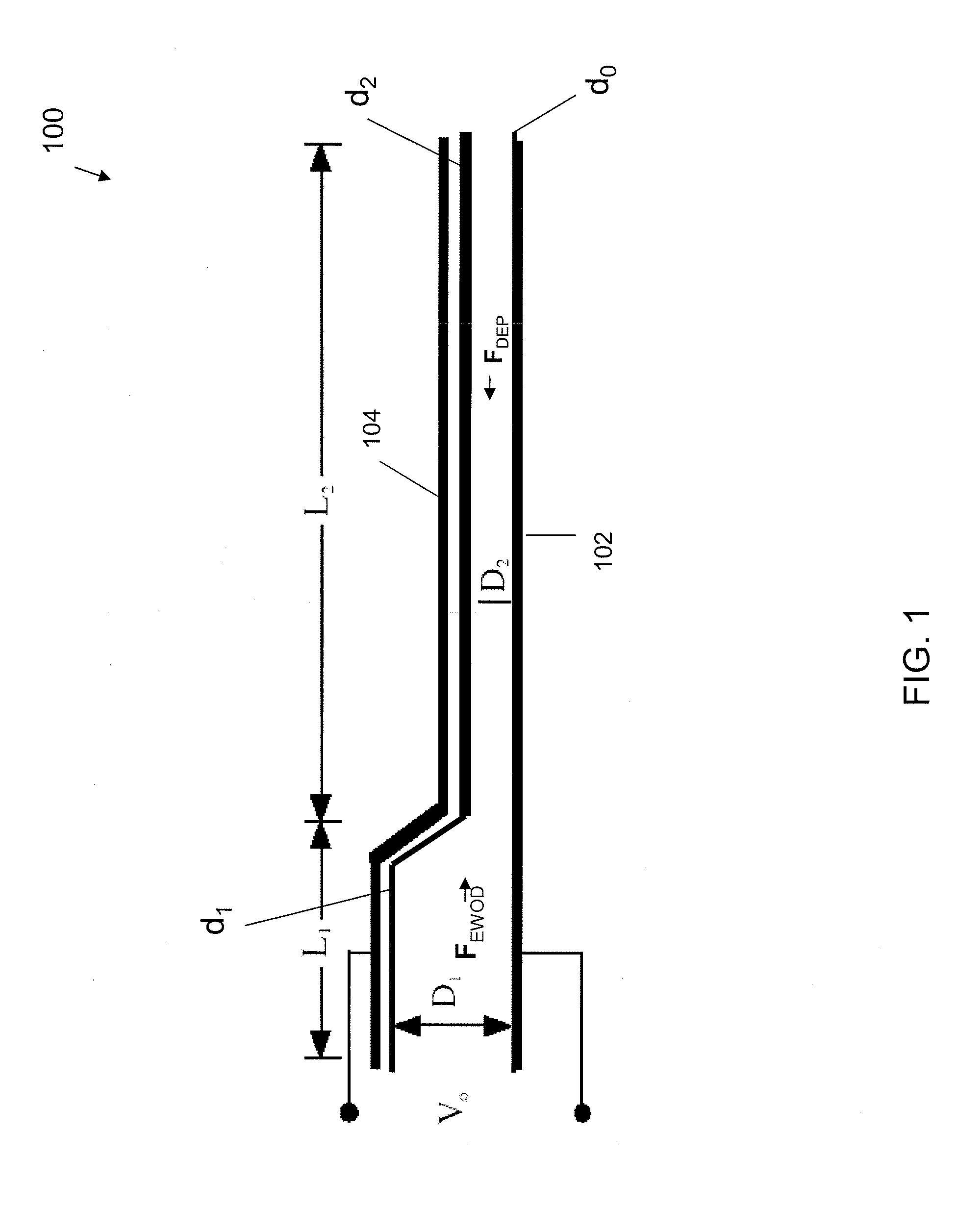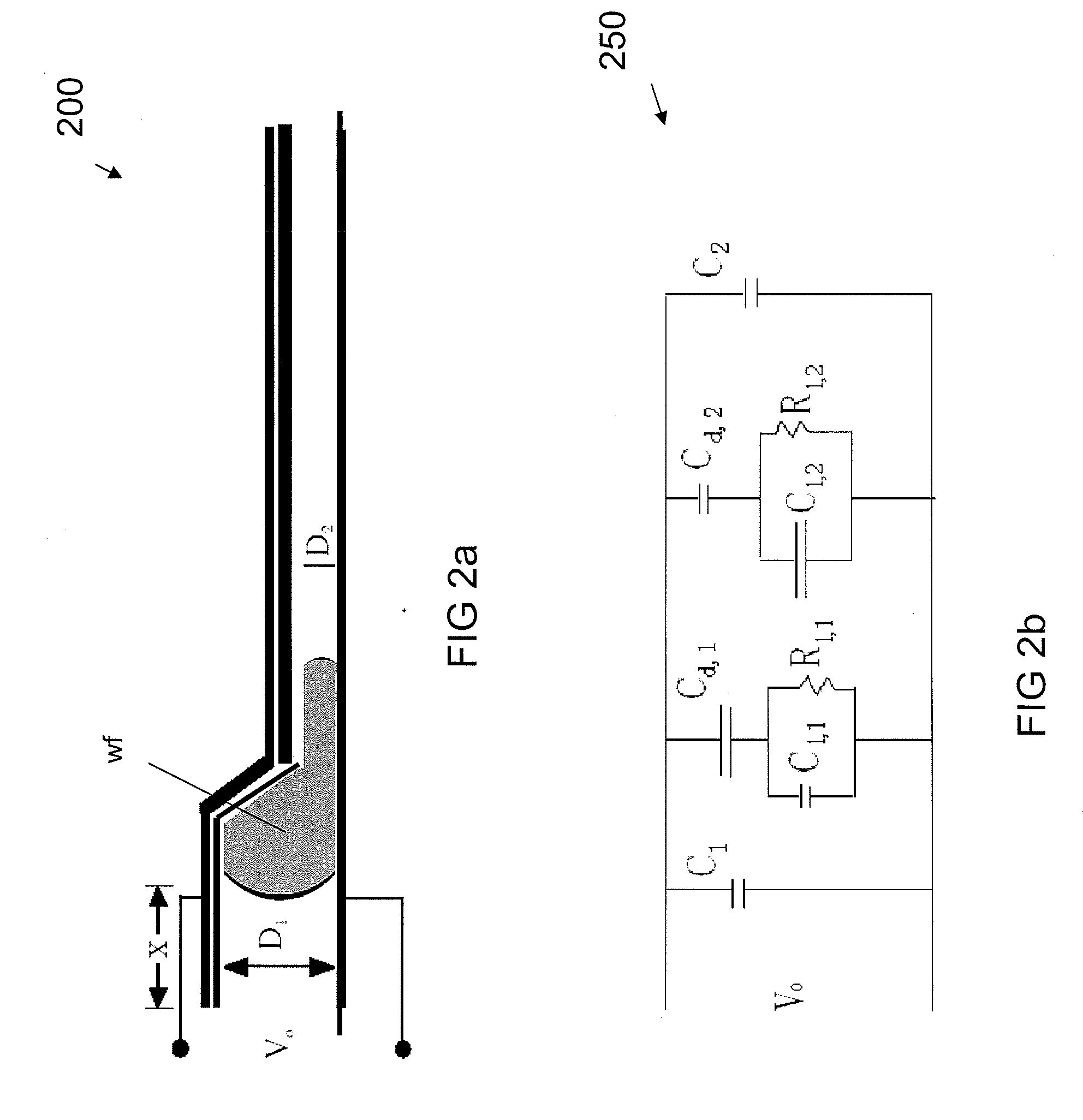Frequency-addressable Apparatus and Methods for Actuation of Liquids
a technology of frequency-addressable apparatus and liquid, which is applied in the field of fluid (liquid) electromechanics, can solve the problems of slow response speed, inability to fully display electrowetting-based displays, and inability to fully store electrowetting data, etc., and achieve uniform thickness.
- Summary
- Abstract
- Description
- Claims
- Application Information
AI Technical Summary
Benefits of technology
Problems solved by technology
Method used
Image
Examples
Embodiment Construction
[0056]FIG. 1 shows a cross sectional schematic view of a bistable, frequency-addressable apparatus 100 (without a working fluid mass) according to an illustrative embodiment of the invention to assist the reader in understanding the frequency-dependent (voltage-independent) actuation principle. As shown, a continuous bottom electrode 102 has a thin dielectric coating of thickness d0. The upper electrode 104 has a dielectric coating of thickness d1 over a length L1 of electrode 104 forming an electrode (fluid) gap (and thus a first compartment having a volume V1) of thickness D1, and a dielectric coating of thickness d2 over a length L2 of electrode 104 forming an electrode (fluid) gap (and thus a second compartment having a volume V2) of thickness D2, wherein d01, d2; d12; D1>>D2; L12; and V1˜V2. As used herein, frequency-addressable actuation means that an achievable reversal of, e.g., an EWOD-based force, FEWOD, acting from left to right (+x), and a reversal of a DEP-based force, ...
PUM
| Property | Measurement | Unit |
|---|---|---|
| dielectric constant κd | aaaaa | aaaaa |
| frequency | aaaaa | aaaaa |
| relative permittivity κwf | aaaaa | aaaaa |
Abstract
Description
Claims
Application Information
 Login to View More
Login to View More - R&D
- Intellectual Property
- Life Sciences
- Materials
- Tech Scout
- Unparalleled Data Quality
- Higher Quality Content
- 60% Fewer Hallucinations
Browse by: Latest US Patents, China's latest patents, Technical Efficacy Thesaurus, Application Domain, Technology Topic, Popular Technical Reports.
© 2025 PatSnap. All rights reserved.Legal|Privacy policy|Modern Slavery Act Transparency Statement|Sitemap|About US| Contact US: help@patsnap.com



